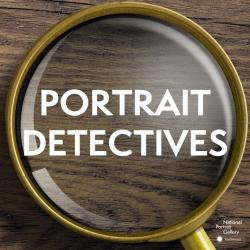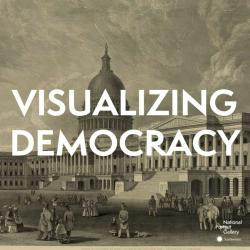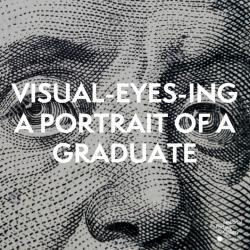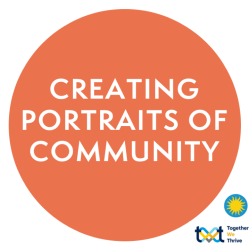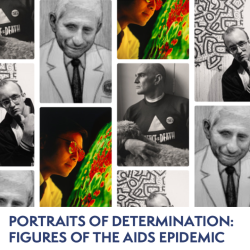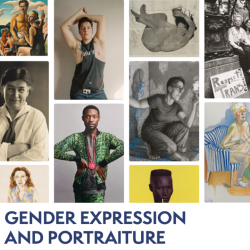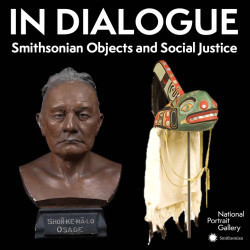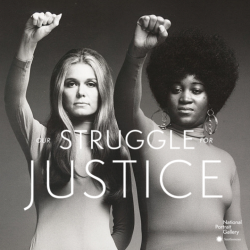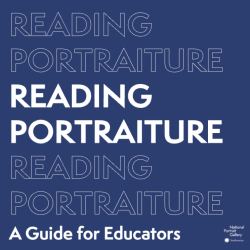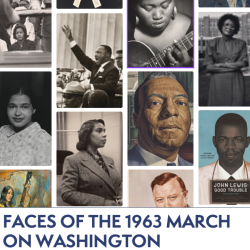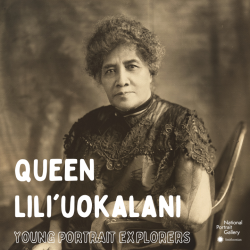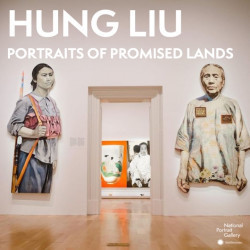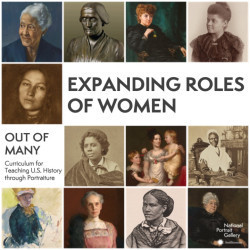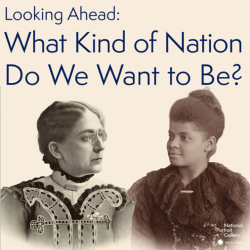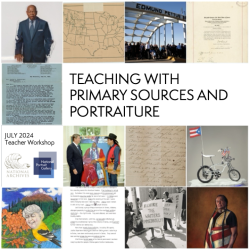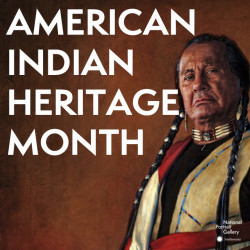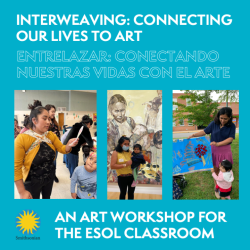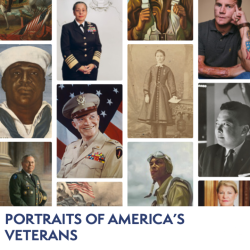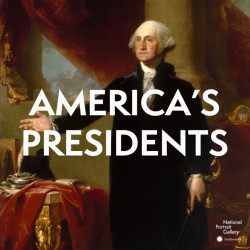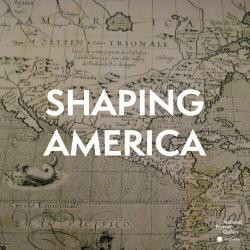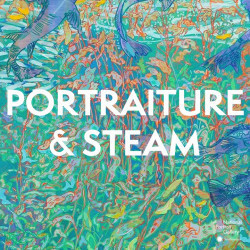Nicole Vance Nash's collections
Portrait Detectives
<p>This Learning Lab complements the National Portrait Gallery's student program, Portrait Detectives.</p>
<p>Students will be transformed into Portrait Detectives, searching portraits for and analyzing clues to learn more about significant Americans. Through interactive discussions and sketching and writing activities, students will read, compare, and contrast portraits across the collection. This module is divided into the following themes to best support your curriculum and student interests: Presidents, Activists, Icons, and Scientists.</p>
<p><strong>Objectives:</strong></p>
<p><strong></strong>After completing this lesson, students will be better able to: </p>
<ul>
<li>Identify important Americans and analyze their contributions to U.S. History <br>
</li>
<li>Identify key components of a portrait and discuss what we can learn about the sitter through these components.</li></ul>
<p><a href="https://npg.si.edu/teachers/school-groups">Schedule</a> a virtual Portrait Detectives program with National Portrait Gallery educators.</p>
<p>#NPGteach</p>
<p><br></p>
 Nicole Vance Nash
Nicole Vance Nash
91
Visualizing Democracy
<p>This Learning Lab complements the National Portrait Gallery's student program, Visualizing Democracy. </p>
<p>Students will visualize democracy from the colonial era to the 21st century by analyzing portraits of major figures who played a critical role—as government officials, engaged citizens, or both—in creating a democratic society for the United States. Students will investigate how portraiture can convey democratic ideals and how, as a cultural institution housed in a historic building, the National Portrait Gallery has been and continues to be relevant to American democracy.</p>
<p><strong>Objectives</strong></p>
<p>After completing this lesson, students will be better able to: </p>
<ul><li>Identify key components of a portrait and discuss what one can learn about the sitter through these components. </li><li>Analyze the history of portraiture and understand how it has evolved from a means to document wealthy individuals to an accessible art form used to represent people from all walks of life. </li><li>Understand the nuance of the word democracy, to comprehend how portraiture’s evolution (the democratization of portraiture) has helped democratize society by giving voice to individuals who have historically been underrepresented. </li><li>Discuss the three branches of federal government and the value of citizen involvement in a democracy. Analyze the legacy of individuals who have been instrumental in creating, improving, and maintaining American democracy. </li><li>Recognize and analyze how cultural institutions, like the National Portrait Gallery, are important components of a robust democracy. </li></ul>
<p><a href="https://npg.si.edu/teachers/school-groups">Schedule</a> a virtual Visualizing Democracy student program with National Portrait Gallery educators.</p>
<p>#NPGteach<br></p>
<p></p>
 Nicole Vance Nash
Nicole Vance Nash
72
Visualizing a Portrait of a Graduate
<p>Visualizing a Portrait of a Graduate is aligned with Fairfax County Public School's 6th grade standards and curriculum. This Learning Lab collection complements the National Portrait Gallery's student program of the same name.</p>
<p>The Visualizing a Portrait of a Graduate student program explores prominent Americans who embody communication, collaboration, resilience, creativity, and global citizenship, while investigating how these traits led to the individuals’ significant contributions to American history and culture. During their visit, students will communicate, collaborate, and engage in critical thinking as they consider portraiture. The program strives to inspire, connect, and provide relevance to the students as they complete/grow into their own self-portrait as a graduate.</p>
<p>After completing this lesson, students will be better able to:<br></p>
<ul><li>Identify key components of a portrait and discuss what we can learn about the sitter through these components, as well as investigate how these components reveal the viewpoints (of artist, sitter, and viewer) represented through the depiction of the sitters</li><li>Identify important Americans from colonial times to the present and analyze their contributions to US history and determine how they exemplify Portrait of a Graduate attributes</li><li>Analyze the various perspectives that artists bring to their work and examine the intended messages of the artists to discover a variety of ways to represent identity while determining if the portrait is realistic or idealized, representational or abstract, or if it fits on a spectrum</li><li>Utilize critical thinking, communication, collaboration, and citizenship skills.</li></ul>
<p><a href="https://npg.si.edu/teachers/school-groups">Schedule</a> a virtual Visualizing a Portrait of a Graduate student program with National Portrait Gallery educators.</p>
<p>#NPGteach #FCPS</p>
<p>Keywords: Portraits, Attributes, Communicator, Collaborator, Ethical, Global Citizenship, Creative, Critical Thinking, Goal Directed, Resilient Individual, Significant Americans, FCPS, Sixth Grade</p>
<ul></ul>
 Nicole Vance Nash
Nicole Vance Nash
58
In Dialogue: Smithsonian Objects and Social Justice with the National Portrait Gallery
<p>Heighten your civic awareness in your classroom through conversations about art, history and material culture. Check back for new objects each month as educators from the National Portrait Gallery partner with colleagues from across the Smithsonian to discuss how historical objects from their respective collections speak to today’s social justice issues.</p>
<p>#NPGteach</p>
<p>Keywords: social justice, portraits, object based learning, material culture, US history, identity, representation, leadership, visible thinking strategies, video tour, Smithsonian </p>
 Nicole Vance Nash
Nicole Vance Nash
66
Explore! at the National Portrait Gallery
<p>This Learning Lab collection complements the National Portrait Gallery student Program, Explore!</p>
<p></p>
<p>The Explore! program introduces young students to portraiture. They will be exposed to what makes up a portrait and search portraits for clues to learn more about themselves and significant Americans. Through interactive discussions and hands-on activities, students will read, compare, and contrast portraits across the collection.</p>
<p></p>
<p>After completing this lesson, students will be better able to:<br></p>
<ul><li>Identify key components of a portrait and discuss what we can learn about the sitter through these components.</li></ul>
<p>#NPGteach</p>
 Nicole Vance Nash
Nicole Vance Nash
63
Our Struggle for Justice: A Digital Collaboration between the National Portrait Gallery & Capital One
<p><em>What can you do to make a difference?</em> Introducing <a href="https://npg.si.edu/visit-home/digital-engagement">Our Struggle for Justice</a>, a digital collaboration between the <a href="https://npg.si.edu/">National Portrait Gallery</a> and <a href="https://www.capitalone.com/">Capital One</a> that explores activism and social justice through biography.<br><br></p>
<p>How can you use your skills to spark conversation, create agency and inspire change? In this collection, meet individuals, past and present, from the museum’s collection whose thoughts and actions have made our nation better. Each featured individual is accompanied by thought-provoking questions, educational resources, and additional portraits to reframe the way we view activism and the causes closest to us.<br></p>
<p>Join us on <a href="https://www.instagram.com/smithsoniannpg/">Instagram</a> and <a href="https://twitter.com/smithsoniannpg">Twitter</a>, follow #OurStruggleForJustice for the latest updates, and look out for new posts each Tuesday. </p>
<hr>
<p>Through our Twitter and Instagram, we will delve into the museum’s collection to contextualize the pursuit of freedom and activism in the United States, sparking conversation and inspiring action. </p>
<p>Our country was established on two basic principles: freedom and the pursuit of happiness. However, over the course of our history, these ideals have been broken, tested and reconstructed. Many times, the onus for upholding the nation’s moral foundation has fallen to the individual rather than the majority. </p>
<p>American activism guides our nation toward its true vision, one that acts upon the ideals of its founding and celebrates the entirety of its population. And while many before us defined what it means to strive for a better America, there is no question that this work is ongoing. </p>
<p>Through Our Struggle for Justice, we will meet individuals, past and present, whose thoughts and actions have made our nation better. Though their experiences and causes vary, these people have one thing in common: they fought tirelessly against injustice, using their time, strengths and sheer will to create meaningful change. </p>
<p>In telling these stories, we aim to spark conversations around agency. Look for thought-provoking questions to reframe the way we think about activism and the causes that are closest to us. <br></p>
<p>The campaign draws inspiration from the Portrait Gallery’s collection, including the permanent exhibition The Struggle for Justice, which celebrates pioneers and change-makers in the fight for social equity. </p>
<p>One person can make a difference. In learning about these figures, we hope that you can, too. <br></p>
 Nicole Vance Nash
Nicole Vance Nash
112
Hung Liu: Portraits of Promised Lands
<p>Explore portraits from "Hung Liu: Portraits of Promised Lands" at the Smithsonian's National Portrait Gallery in this Learning Lab collection.<br></p>
<p>Hung Liu (1948–2021) was a contemporary Chinese-born American artist, whose multilayered paintings established new frameworks for understanding portraiture in relation to time, memory, and history. Often sourcing her subjects from photographs, Liu elevated overlooked individuals by amplifying the stories of those who have historically been invisible or unheard. Having lived through war, political revolution, exile, and displacement, she offered a complex picture of an Asian Pacific American experience. Her portraits speak powerfully to those seeking a better life, in the United States and elsewhere. <em>Hung Liu: Portraits of Promised Lands</em> will be first major exhibition of the artist's work on the East Coast. This is also the first time that a museum will focus on Liu’s portraiture.</p>
<p><em>The story of America as a destination for the homeless and hungry of the world is not only a myth. It is a story of desperation, of sadness, of uncertainty, of leaving your home. It is also a story of determination, and—more than anything—of hope.</em></p>
<p>— Hung Liu, 2017</p>
<p><em></em>"Hung Liu: Portraits of Promised Lands" will be on view at the National Portrait Gallery August 27, 2021, through May 30, 2022</p>
<p>Keywords: Hung Liu, Chinese-American, AAPI, Cultural Revolution, China, Portraits, Portraiture, Family, Mother, Father, Daughter, Son, Gender, Refugees, Immigration, Identification, Identity, Displacement, War, Asian Pacific American, Painting, Photography, Memory, Migration, Dorothea Lange, Carrie Mae Weems</p>
 Nicole Vance Nash
Nicole Vance Nash
57
Expanding Roles of Women
<p>This Learning Lab complements, "Expanding Roles of Women," an interdisciplinary curriculum guide, featuring portraits from the Smithsonian’s National Portrait Gallery exhibition,<em> Out of Many: Portraits from 1600 to 1900. </em>The portraits are used as entry points to teach about the history of women in America during this time period. This collection serves as a home base, organizing the following components: (1) Background Essay and Timeline; (2) Reading Portraiture 101; (3) Lesson Plans; (4) Assessments; (5) Teaching Posters; (6) Additional Resources; (7) Curriculum Guide; and (8) Videos for Educators.</p>
<p>Throughout these Learning Lab collections, students will examine not only the portraits’ subjects and artists but will also gain insight into the larger historical time period in which the subjects lived. By studying the exhibition’s portraits, students will be able to understand how the women in these portraits lived and located agency. Furthermore, students reflect on the present by considering how women today continue to make changes in society. <br></p>
<p>Educators will come to this Learning Lab collection from a wide range of disciplines and grade levels and can use the activities and resources as they see fit. The materials have been developed toward middle school social studies classes to allow teachers to scaffold lessons and add extension activities as needed. This Learning Lab collection was designed to be integrated with flexibility. It can be used in order, as single-time activities, or in various combinations to support existing topics in the curriculum.</p>
<p>#NPGteach<br></p>
 Nicole Vance Nash
Nicole Vance Nash
28
Looking Ahead: What Kind of Nation Do We Want to Be?
<p>How can the past inform our future? Imagine you are living in the U.S. in 1899. In this era of rapid expansion and increasing tensions many Americans are asking "what kind of nation do we want to be?" Across the United States, people are talking about what that means for themselves and for their country. For this lesson, students will imagine they are gathered in an issue forum. This guide is meant to provide a framework for student deliberation by offering three approaches to the complex question: "what kind of nation do we want to be?" Each option is accompanied by possible actions to be taken and notes possible drawbacks.</p>
<p>#NPGteach</p>
 Nicole Vance Nash
Nicole Vance Nash
18
Portraits of America's Veterans
<p>Commemorate American Veterans and get to know their stories in this collection. Take a close look at several veterans and how their lives and legacies are shaped by their military service. #NPGteach</p>
 Nicole Vance Nash
Nicole Vance Nash
50
America's Presidents
<p>This Learning Lab collection complements the National Portrait Gallery student program, America's Presidents.</p>
<p></p>
<p>The America’s Presidents student program focuses on the idea of what we can learn about presidents and their legacies from how they are portrayed in their portraits, on what it means to look “presidential” in a portrait, and on how the portrayal of presidents has changed over time.</p>
<p>After completing the program, students will be better able to:</p>
<p>● Identify key components of a portrait and analyze how these components fit into the way the sitter is defined/remembered.<br>● Compare and contrast what different portraits reflect about how each president is portrayed and remembered.<br>● Identify American presidents and analyze their contributions to U.S. History.<br></p>
 Nicole Vance Nash
Nicole Vance Nash
90
Earth Day with the National Portrait Gallery
<p>Celebrate Earth Day with the National Portrait Gallery. In this collection you will find six lessons that use portraiture as an entry point for talking about the planet. Each lesson highlights close looking questions and a activity. Lessons include:</p>
<ol><li>Learn About the Earth with Planetary Scientist Carl Sagan</li><li>Build a Bug with Biologist E.O. Wilson</li><li>Make a Self-Portrait with Marine Biologist Julie Packard</li><li>Create a Leaf Rubbing with Sociologist Dorceta Taylor</li><li>Design a Poster with Climate Activist Dolores Huerta</li><li>Write a Story with Botanist George Washington Carver</li></ol>
<p>#NPGteach</p>
 Nicole Vance Nash
Nicole Vance Nash
47

